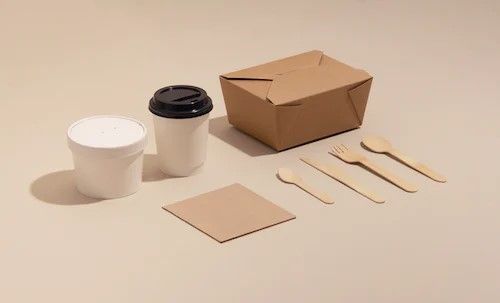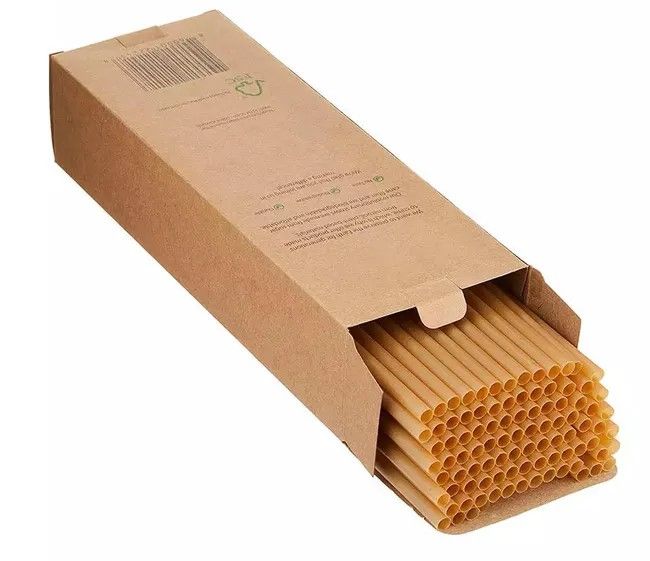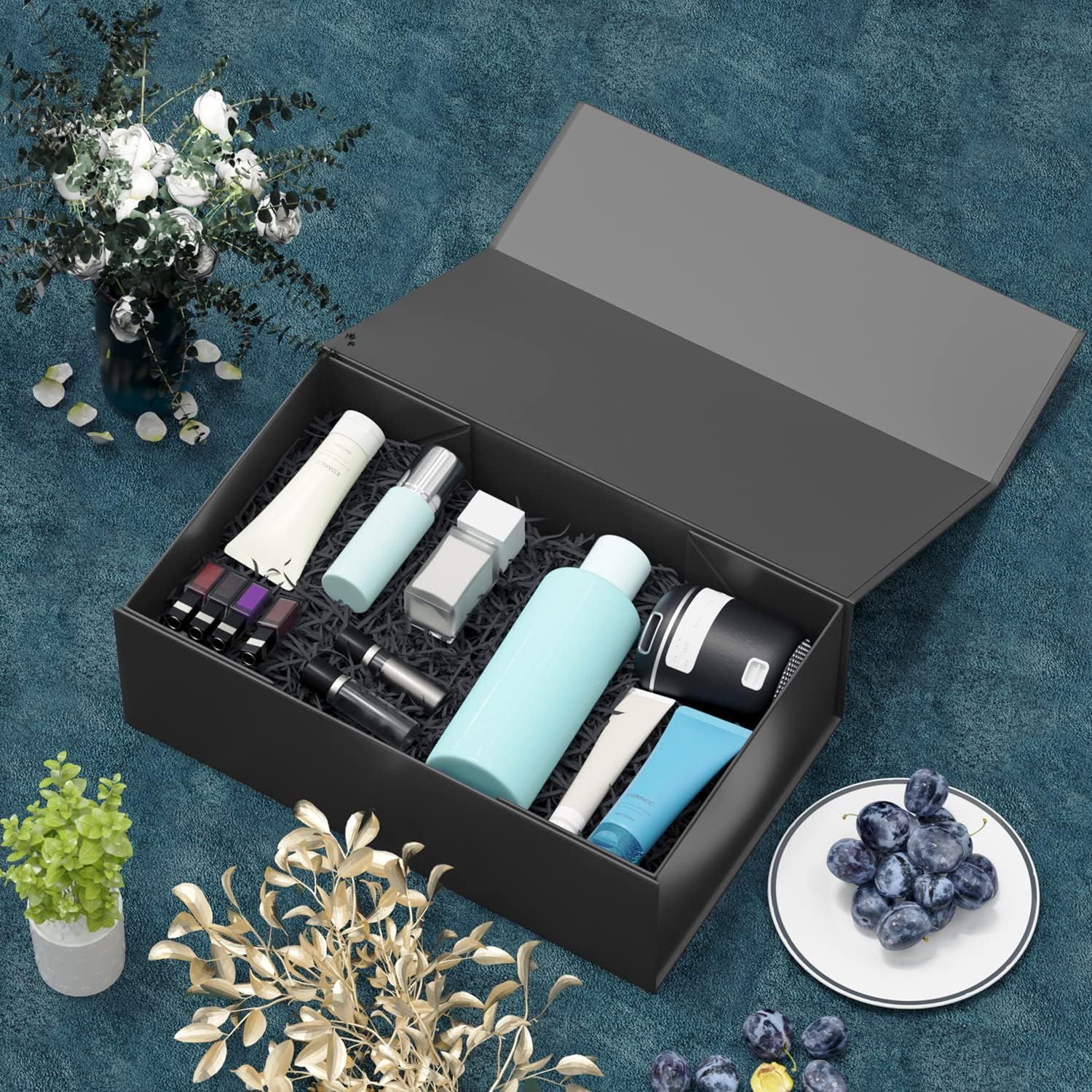
Get A Quote
What Features of Packaging Are Important to Consumers
In a marketplace where choice is abundant, businesses are constantly seeking ways to drive sales and foster brand loyalty. Among the myriad of marketing strategies, one stands out for its direct impact on the consumer: the art of packaging.
The Food Marketing Institute reveals a staggering figure: the average U.S. supermarket carries over 28,000 products. In such a crowded space, how can a brand capture a consumer's attention? The answer lies in packaging. By incorporating key design elements into packaging, brands can differentiate themselves and resonate with consumers. Aesthetic appeal, practicality, and quality are not just facets of good packaging; they are essential to maintaining competitiveness and enhancing customer satisfaction. This approach to packaging does more than just hold a product; it communicates a brand's value and commitment to its consumers.
7 packaging features that appeal consumers
Packaging is much more than a protective layer for products; it's a crucial element of the marketing strategy, offering direct engagement with customers. Well-designed packaging can significantly enhance brand loyalty. Here are seven key features of packaging that resonate with consumers:
1.Product Protection
The foremost role of packaging is to safeguard the product from damage, spoilage, contamination, or loss. Effective packaging ensures the customer receives the product in its best condition. Multi-layered packaging designs offer optimal protection. For example, food items often require freshness seals to extend shelf life, while resealable vacuum-sealed bags add both protection and convenience. Beverages benefit from freshness seals and tamper-proof features, reassuring customers of their safety and integrity. Childproof elements are also highly valued, especially by parents. For products like food and supplements, desiccant packs containing silica gel or bentonite clay are used to control humidity and prevent spoilage or odor, thus maintaining product quality.
Understanding these packaging preferences helps brands to create packaging that not only protects but also pleases the consumer, thereby fostering trust and loyalty.
2.Information Architecture
The way information is presented on packaging is crucial for engaging consumers quickly and effectively. Given that people make thousands of decisions daily, often in mere seconds, the hierarchy and clarity of information on packaging can significantly influence their choice. Key elements to feature prominently include:
- Brand Identity: Display your brand name or logo, especially if it's well-recognized.
- Unique Selling Points: Highlight attributes like "organic," "vegan," or "fair trade" that appeal to your target audience.
- Product Visualization: Use captivating images to show what the consumer can expect.
This strategic presentation of information aids consumers in making quick, informed decisions, enhancing their shopping experience.
3.Instructions and Directions
Clear instructions or directions on packaging are essential for ensuring a positive user experience. This includes:
- Usage Guidelines: Suggest the optimal quantity for use or consumption.
- Age Suitability: Indicate which age groups the product is appropriate for.
Usage Frequency and Warnings: Provide safe frequency of use and highlight any potential risks of misuse.
- Storage Conditions: Offer advice on how and where to store the product.
- Customer Support: Include contact details like a toll-free number, website, and physical address.
Additionally, be aware of industry-specific packaging and labeling regulations to ensure compliance with legal requirements. This comprehensive approach to packaging not only enhances user satisfaction but also builds trust and loyalty towards your brand.
4.Health and Nutrition Facts
In the food and beverage sector, providing detailed health and nutritional information on packaging is increasingly important. This includes more than just listing ingredients; it involves offering clear data on calories and nutritional content. Today's health-conscious consumers seek transparency about potential allergens, toxins, or harmful additives. Highlighting that products are free from specific ingredients can significantly sway their purchasing decisions. Additionally, incorporating QR codes on packaging that link to detailed information about ingredients and their benefits caters to informed consumers, fostering trust and loyalty.
5.Accessibility and Inclusivity
Packaging design should consider all consumers, including those who face challenges with standard packaging due to age, culture, or physical limitations. Here are some inclusivity-focused features:
- Multilingual Information: For diverse consumer bases, including information in multiple languages like Spanish or French can be beneficial.
- Measurement Systems: Providing measurements in both imperial and metric systems caters to a global audience.
- Ease of Use: Design features like loops, hinges, or slides can make packaging more accessible to individuals with dexterity or mobility issues.
- Visual Impairment Considerations: Tactile symbols for those who are visually impaired or have trouble reading small print can greatly enhance the user experience.
Incorporating these features not only broadens your market but also demonstrates a commitment to inclusivity and care for all consumer needs.
6.Eco-Friendly Materials
In an era where environmental consciousness is a significant consumer concern, eco-friendly packaging is not just a trend but a necessity. Consider these aspects:
- Recycled and Biodegradable Materials: Use materials like biodegradable plastics, recycled papers, glass, or metals.
- Resource-Efficient Manufacturing: Avoid practices that require excessive water or energy.
- Non-Toxic and Safe Materials: Choose materials safe for children, pets, and people with allergies.
- Reusable or Repurposable Design: Opt for packaging that can be reused or repurposed, like glass bottles, durable bags, or lightweight aluminum containers.
Remember, packaging engages all senses. Eco-friendly options are usually odorless or lack a strong chemical smell, providing a more pleasant experience for consumers, especially those with sensitivities.
7.Aesthetics and Branding
The visual appeal of packaging is critical in capturing consumer attention. Here are some guidelines for effective packaging design:
- Color Scheme: Select colors that are visually pleasing, complementary, and eye-catching.
- Fonts: Choose legible fonts and a harmonious combination of typefaces.
- Logo Visibility: Ensure your logo is prominently displayed for brand recognition.
- Social Media Integration: Include social media handles to foster a community around your brand.
- Tagline or Slogan: Feature your brand's tagline or slogan to distinguish your product from competitors.
- Package Shape: Consider unique shapes that align with your brand identity while remaining functional.
Staying within these guidelines allows for creativity and brand expression. For tailored packaging solutions that align with your brand's vision, consulting with a prototype expert can be a valuable step in designing the ideal packaging.
5 tips for developing your product's packaging
Improving your product's packaging to meet consumer needs and preferences can be a game-changer for your brand. Not every packaging feature suits all products, so it's crucial to identify what resonates with your specific customer base. Here are five tips to effectively improve your product’s packaging:
1.Gather Customer Feedback
Understanding your customers' preferences is key. Engage them through surveys, feedback forms, and other interactive methods to learn what packaging aspects they value most. This direct input is invaluable for making targeted improvements that can boost sales.
2.Incremental Improvements
Rather than overhauling your packaging all at once, focus on enhancing one feature at a time. This approach allows you to monitor the impact of each change on sales and customer response, enabling you to fine-tune your packaging effectively.
3.Seasonal Design Variations
Experiment with seasonal packaging designs. Brands like Coca-Cola and Starbucks have successfully used this strategy to capture consumer interest during holidays and special occasions. Analyze the response to these seasonal designs to decide if any features should be adopted permanently.
4.Professional Design Expertise
Packaging redesign carries inherent risks, as drastic changes can disorient consumers. Collaborate with experienced designers who specialize in packaging to strike the right balance between innovation and familiarity.
5.Prototype Testing
Before a full-scale rollout, test your new packaging designs through prototypes. This step is crucial to gauge consumer response and ensure the packaging aligns with your brand identity and marketing goals. Services like Phase 1 Prototypes can assist in this process, helping you explore various packaging options and select the most effective one.
Adopting these strategies can lead to packaging that not only appeals to your customer base but also strengthens your brand's market presence.
Choose Dobbking for Your Next Product Package Prototype
In today's competitive market, packaging is more than just a container for your product. It's a crucial component of your brand's identity, a tool for engaging with customers, and a way to communicate your company's values. That's why it's essential to craft packaging that not only meets but exceeds consumer expectations.
Developing a prototype for your product's packaging is a smart strategy to refine your design and ensure it hits the mark before a full-scale rollout. Dobbking offers customized packaging prototype and mock-up services that cater to a diverse range of needs. Whether you're looking for innovative, sustainable, or eye-catching designs, Dobbking has the expertise to bring your vision to life.
Our mock-up services are designed to incorporate the latest consumer trends and preferences into your packaging, ensuring that your product stands out on the shelves. By choosing Dobbking, you'll gain access to high-quality prototypes that let you test and perfect your packaging design efficiently.
Reach out to Dobbking today to explore how we can help you create a packaging prototype that embodies your brand's essence and appeals to your target audience. Let's collaborate to make your product packaging a key driver of customer interest and repeat business.
Want to customize your tube or box packaging solution? Leave your needs below and our experts will contact you soon!


